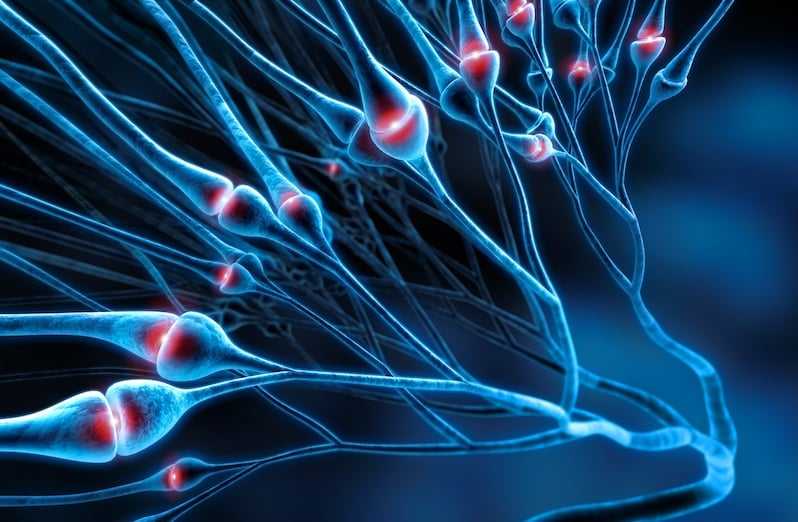
Understanding Mechanisms Underlying Neuropathic Pain
Neuropathic pain arises from trauma or injury to either the peripheral or central nervous system. It is characterized by abnormal processing of signals within the nervous system with a variety of symptoms, including shooting or burning pain, tingling, numbness, and allodynia. Various conditions and factors can lead to neuropathic pain, including different disease states, injury, or inflammation. Achieving clinically significant relief is often challenging, particularly as conventional opioid therapies are less effective for this type of pain.
There are many existing models for neuropathic pain that mimic chemotherapy-induced neuropathy, diabetic-induced neuropathy, or surgically induced neuropathy. This blog will primarily focus on nerve injury and repair, either in the peripheral or central nervous system, resulting from surgery or accidental trauma. Rodent models for peripheral trauma and injury are widely used to understand the pathophysiology of chronic neuropathic pain. They offer reproducibility and simplicity and can be beneficial when assessing impairment of motor function. While rodents have led to an increase in knowledge on pain mechanisms, their translational relevance is limited. The peripheral neuritis trauma (PNT) and neuroma models, developed by MD Biosciences are translational models for nerve injury and repair that address the gap between preclinical rodent models and the clinic.
Peripheral Nerve Injury and Repair Models
Preclinical rodent models in neuropathic pain research offer great promise for both the identification of pain mechanisms and the investigation of possible therapeutic applications. MD Biosciences offers several peripheral nerve injury and trauma models that involve injury to peripheral nerves, nerve roots or the spinal cord. The insults are created by transection, ligation, or compression (Fig 2).
How do you choose which model to use?
When choosing between the different peripheral nerve injury and repair models, it is important to consider the mode of action and the drug target pathway that is being investigated. Deciding between surgically induced pain, cuff, or crush models, as well as choosing between rodents or pigs can be challenging. Our team of scientists are available to provide guidance in making informed decisions when selecting from these models.
|
Model |
Species |
Model Length |
|
SD Rats |
Up to 30 days |
|
|
SD Rats, C57BL/6 Mice |
Up to 30 days |
|
|
SD Rats, C57BL/6 Mice |
Up to 28 days |
|
|
SD Rats, C57BL/6 Mice |
7 days |
|
|
SD Rats |
14-15 days |
|
|
SD Rats |
14 days |
|
|
SD Rats, C57Bl/6 mice |
Several weeks |
|
|
Domestic Pigs, Gottingen Minipigs |
Up to 30 days |
|
|
Domestic Pigs, Gottingen Minipigs |
28 days, up to 6 months |
|
|
SD Rats |
Up to 30 days |
|
|
Gottingen Minipigs |
6 months to 1 year |
Fig 1: Peripheral Nerve Injury and Repair models

Fig 2: PNI Models depicted in sciatic nerve
Behavioral and Physiological Assessments
Neurological disorders often result in a combination of motor and cognitive deficits. Behavioral assessments and physiological readouts together improve our understanding of disease and cognitive impairment which is important for therapeutic development. Readouts include behavioral assessments, such as von Frey, cold plate, and dynamic weight bearing. Additional endpoints include histology, biomarker analysis, and in vivo electrophysiology. Measurements of both motor and sensory evoked potentials are performed in anesthetized animals throughout the study to evaluate damage and recovery of these pathways and disease progression. This allows for empirical measurements of both motor and sensory evoked potentials, evaluating damage and recovery of these pathways.
PIG MODELS
Peripheral Neuropathic Trauma Model
MD Biosciences developed the peripheral neuritis trauma (PNT) pig model to surgically-induce chronic neuropathic pain. PNT is an excellent translational model for neuropathic pain due to their physiological and neurological similarities. In this model, 75% of the animals exhibited signs of mechanical and tactile allodynia by day 28 post-surgery, demonstrating painful neuropathy.1
Neuroma Model
Neuroma is an outcome of hypercellular and proliferative outgrowths that occur after nerve injuries. MD Biosciences developed a pig neuroma model that includes readouts like von Frey, open field assay, motor function, biomarker analysis, and histology. The development of a large animal model for neuroma in the pig opens the opportunity for development of device technology and surgical-related concepts.
Peripheral Nerve Repair
Models of nerve repair are used to study and test technologies such as wraps, conduits, and fillers. Currently, the majority of studies are conducted in rats, while rabbits are typically chosen for larger animal experiments. Pigs present a promising solution for peripheral nerve injury models due to their ability to simulate critical gaps and facilitate various functional assays such as computerized gait analysis, cMAP and DSNAP tests. In this model, the sciatic nerve is dissected to simulate peripheral nerve damage.
If you would like to speak more about the models and how they relate specifically to your study, please contact us. Our team of neuroscientists are experts in pain and neurodegeneration and can help develop customizable predictive studies.
References
Related Posts
Behavioral Assessments in Preclinical Pain Models
Chronic pain affects 1 in 5 adults in the US, making it one of the most common chronic...
Assessing Subjective Pain | Preclinical Pain Studies
Rodent models of pain such as nerve injury models are important to understand the mechanisms that...
Pain Studies In Pig: advantages for nerve blocks, local & systemic therapies
MD Biosciences lab has an exclusive expertise in pain studies in the pig. Our scientists have...


